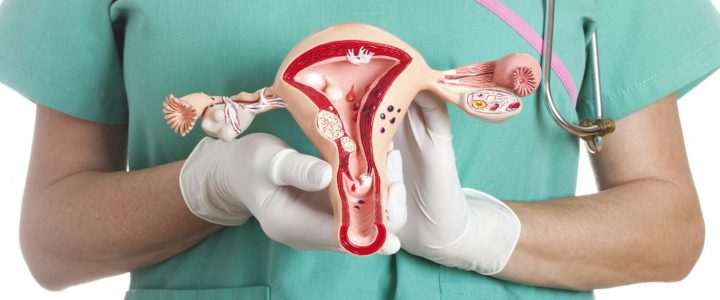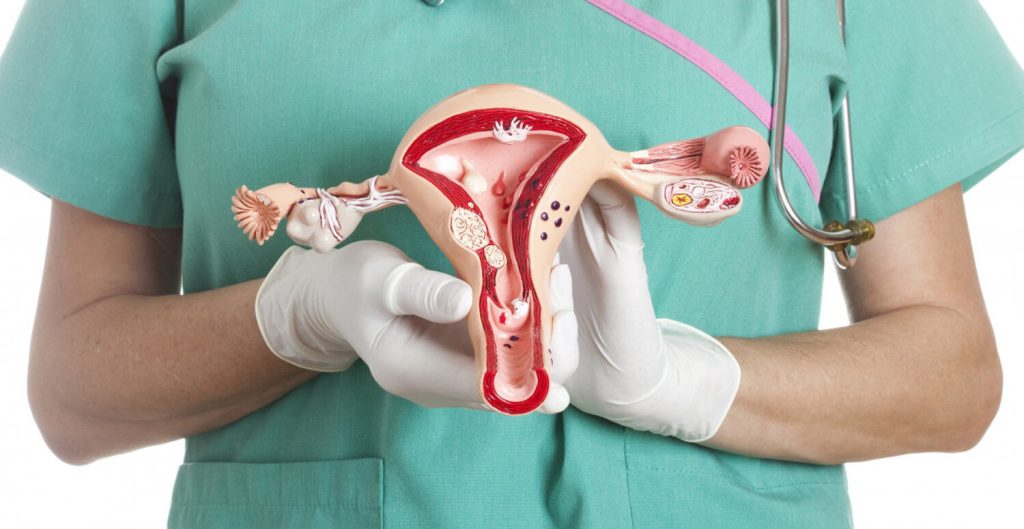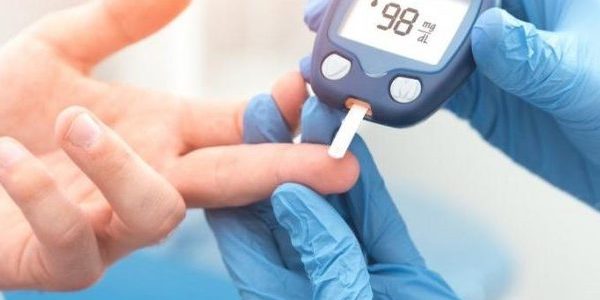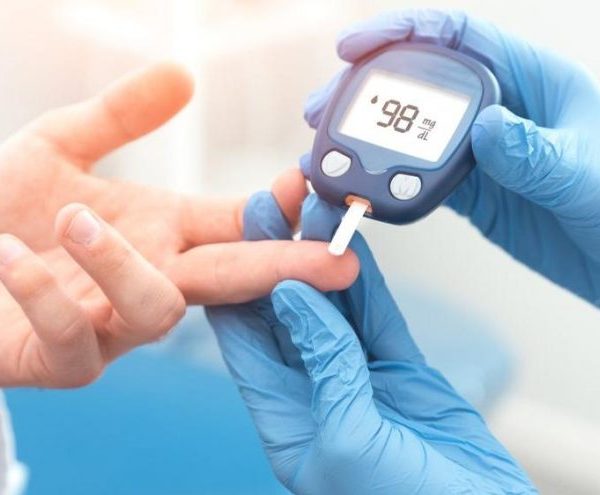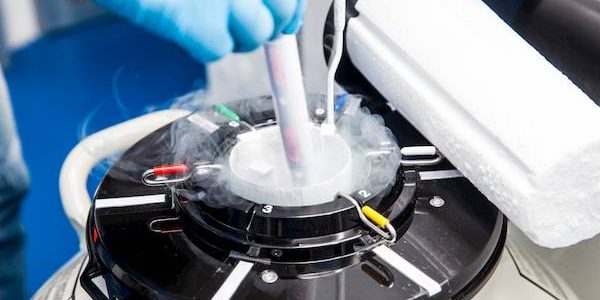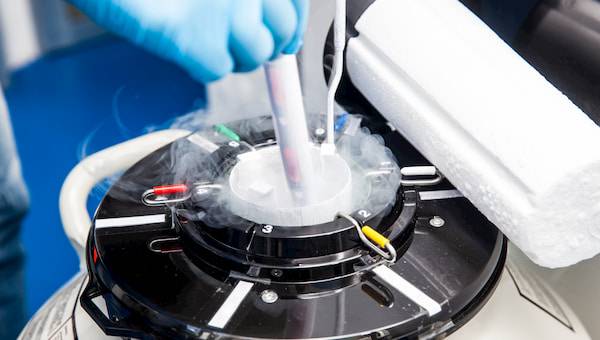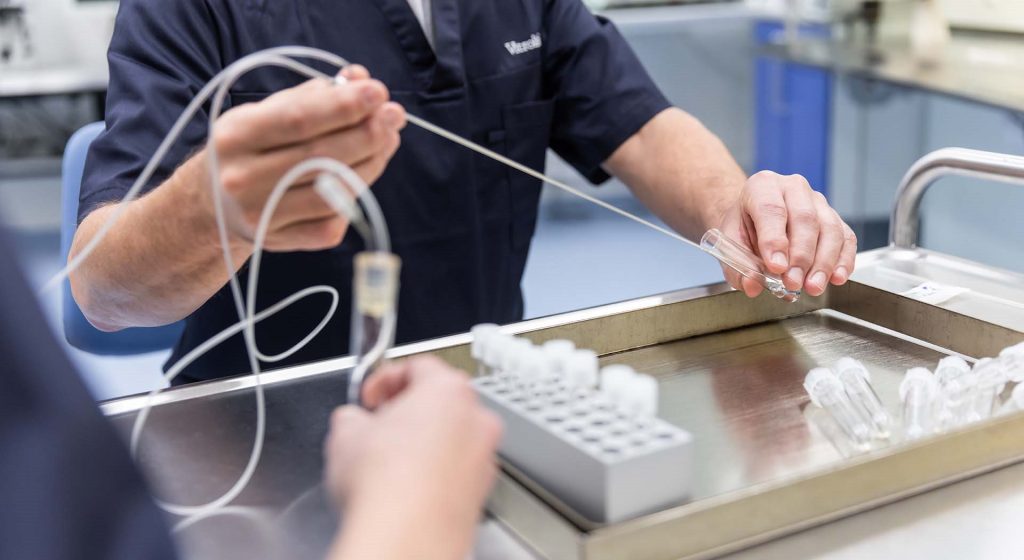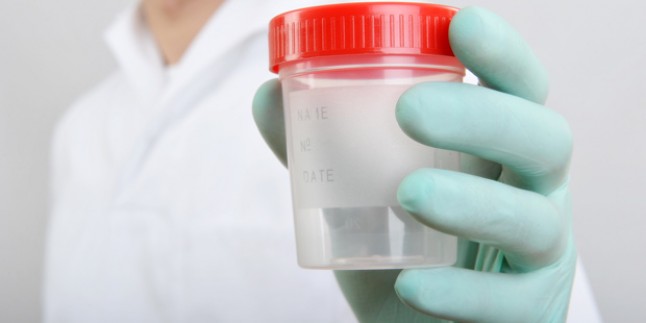Understanding Endometriosis And Its Effects
Endometriosis is a medical condition that affects many women worldwide. It occurs when the tissue that normally lines the uterus begins to grow outside of it. This condition can cause various symptoms such as pelvic pain, heavy menstrual bleeding, and infertility. The exact cause of endometriosis is unknown, but certain factors such as hormonal imbalance and a family history of the condition may increase the risk.
One of the most concerning aspects of endometriosis is its impact on fertility. Many women with endometriosis struggle to conceive naturally or may face difficulty in carrying a pregnancy to term. The abnormal growth of endometrial tissue can lead to the formation of scar tissue, adhesions, and ovarian cysts, all of which can interfere with the normal functioning of the reproductive system. It is estimated that up to half of women experiencing infertility have endometriosis.
- Can you get pregnant with endometriosis?
Yes, it is possible to get pregnant with endometriosis, although it may be more challenging. The severity of the condition, its location, and the extent of damage to the reproductive organs can affect the chances of conceiving naturally. However, with the right medical interventions and treatments, many women with endometriosis can still achieve a successful pregnancy.
| Factors that affect pregnancy with endometriosis: | |
|---|---|
| 1. The stage and severity of endometriosis: | Women with severe endometriosis may experience more difficulties in getting pregnant compared to those with milder forms of the condition. |
| 2. Age: | As a woman gets older, the quality and quantity of her eggs decrease, making it harder to conceive even without endometriosis. The combination of age and endometriosis can further reduce the chances of pregnancy. |
| 3. Other fertility factors: | Women with endometriosis may also have other underlying fertility issues that can impact their ability to get pregnant, such as blocked fallopian tubes or hormonal imbalances. |
It is important for women with endometriosis who are trying to conceive to consult with a healthcare professional. They can evaluate the individual circumstances and recommend appropriate treatment options. Some of the common interventions may include hormone therapy, laparoscopic surgery, or assisted reproductive techniques like in vitro fertilization (IVF).
While endometriosis can have significant effects on fertility, it is crucial to remember that every woman’s experience is unique. With the right support and medical care, many women with endometriosis can still fulfill their dreams of becoming mothers. It is essential to stay informed, seek professional guidance, and remain hopeful throughout the journey.
The Impact Of Endometriosis On Fertility
Endometriosis is a common condition that affects many women worldwide. It occurs when the tissue lining the uterus, known as the endometrium, grows outside of the uterus. This can cause various symptoms such as pelvic pain, heavy periods, and infertility. In this blog post, we will focus on the impact of endometriosis on fertility and the challenges it presents for women trying to conceive.
One of the main effects of endometriosis on fertility is the formation of pelvic adhesions and scar tissue. As the endometrial tissue implants itself in other areas of the pelvis, it can cause the organs to stick together. This can lead to blocked fallopian tubes, preventing the sperm from reaching the egg and vice versa. Additionally, the scar tissue can affect the quality of the eggs, making it difficult for them to be fertilized properly.
Another factor that affects fertility in women with endometriosis is the inflammation caused by the condition. The presence of endometrial tissue outside the uterus triggers an immune response, leading to chronic inflammation in the pelvic region. This inflammation can have a negative impact on the ovaries, affecting their ability to produce healthy eggs. It can also lead to the production of substances that are toxic to sperm, making it harder for fertilization to occur.
Furthermore, endometriosis can disrupt the hormonal balance in the body, which is essential for ovulation and pregnancy. The abnormal growth of endometrial tissue can produce excessive amounts of estrogen, which can interfere with the production of luteinizing hormone (LH) and follicle-stimulating hormone (FSH). Without the proper balance of these hormones, ovulation may not occur regularly, making it difficult to conceive.
- Women with endometriosis may also experience changes in the structure of the ovaries. The condition can cause the development of ovarian cysts, known as endometriomas. These cysts can affect the follicles and eggs, reducing the chances of successful fertilization and implantation.
- Endometriosis can also cause chronic pain and discomfort, which can affect a woman’s sex drive and ability to engage in sexual intercourse. This can further hinder the chances of conception, as regular sexual activity is necessary for pregnancy.
- It is important for women with endometriosis who are trying to conceive to seek medical assistance. A fertility specialist can assess the severity of the condition and recommend appropriate treatment options. These may include medication to control the symptoms, surgery to remove the endometrial tissue and adhesions, or assisted reproductive techniques such as in vitro fertilization (IVF).
| Factors Affecting Pregnancy with Endometriosis |
|---|
| Limited egg supply |
| Blocked fallopian tubes |
| Endometrial inflammation |
| Hormonal imbalances |
| Ovarian cysts (endometriomas) |
| Chronic pain and discomfort |
In conclusion, endometriosis can have a significant impact on fertility. It can lead to the formation of adhesions and scar tissue, cause inflammation in the pelvic region, disrupt hormonal balance, and affect the structure of the ovaries. These factors can make it challenging for women with endometriosis to conceive naturally. However, with the help of medical assistance and the advances in assisted reproductive techniques, many women can still achieve pregnancy and fulfill their dreams of becoming mothers.
Factors That Affect Pregnancy With Endometriosis
Endometriosis is a common gynecological condition that affects many women worldwide. It occurs when the tissue lining the uterus, known as the endometrium, grows outside of the uterus. This condition can cause a myriad of symptoms such as pelvic pain, heavy menstrual bleeding, and fertility issues. In fact, one of the biggest concerns for women with endometriosis is the ability to conceive and carry a pregnancy to term.
Can You Get Pregnant with Endometriosis?
One of the major questions women with endometriosis ask is whether they can conceive and have a successful pregnancy. The answer is not a simple yes or no. While endometriosis can certainly affect fertility, it does not mean that pregnancy is impossible. However, it is important for women with endometriosis to understand the various factors that can impact their ability to conceive and carry a pregnancy to term.
The Impact of Endometriosis on Fertility
Endometriosis can affect fertility in several ways. The abnormal growth of endometrial tissue can lead to the formation of adhesions and scar tissue in the pelvis, causing structural abnormalities that may interfere with the fertilization process. Additionally, the presence of endometriosis can disrupt the hormonal balance in the body, which is crucial for the development and release of healthy eggs. Furthermore, inflammation caused by endometriosis can potentially damage the eggs or sperm, making conception more challenging.
Seeking Medical Assistance For Conception
If you are struggling to conceive due to endometriosis, you may be wondering if there are any medical treatments that can help you achieve pregnancy. The answer is yes! There are several medical interventions available that can increase your chances of conceiving and carrying a healthy pregnancy to term.
One option is fertility medication, which can help regulate your menstrual cycle and stimulate ovulation. These medications work by increasing the production of hormones that trigger ovulation, such as follicle-stimulating hormone (FSH) and luteinizing hormone (LH). By promoting the development and release of eggs, fertility medication can significantly improve your chances of getting pregnant.
In some cases, your doctor may recommend assisted reproductive techniques, such as in vitro fertilization (IVF) or intrauterine insemination (IUI). IVF involves the extraction of eggs from your ovaries, which are then fertilized with sperm in a laboratory. The resulting embryos are then transferred back into your uterus. IUI, on the other hand, involves the placement of washed and concentrated sperm directly into your uterus during the time of ovulation.
- Fertility treatments can greatly increase your chances of getting pregnant, even if you have endometriosis. However, it is important to keep in mind that these treatments are not a guaranteed solution. Success rates vary depending on factors such as the severity of your endometriosis and your age. It is recommended to consult with a fertility specialist who can assess your individual case and provide guidance on the most appropriate treatment options for you.
| Treatment Option | Success Rate |
|---|---|
| Fertility Medication | Varies depending on individual case |
| In Vitro Fertilization (IVF) | Varies depending on individual case |
| Intrauterine Insemination (IUI) | Varies depending on individual case |
It is also important to note that seeking medical assistance for conception does not necessarily mean you have to undergo invasive procedures. Your doctor may first recommend less invasive options, such as lifestyle changes and hormonal therapy, before moving on to more advanced treatments.
Additionally, it is crucial to address any other underlying health conditions that may be affecting your fertility. Conditions such as polycystic ovary syndrome (PCOS) or blocked fallopian tubes can significantly impact your ability to conceive. By treating these conditions alongside endometriosis, you can improve your overall chances of getting pregnant.
In conclusion, if you are struggling to conceive due to endometriosis, seeking medical assistance can greatly increase your chances of achieving a successful pregnancy. Fertility medication, assisted reproductive techniques, and addressing other underlying health conditions can all play a significant role in helping you conceive. Remember to consult with a fertility specialist who can provide personalized guidance and recommend the most suitable treatment options for your specific situation.
Assisted Reproductive Techniques For Women With Endometriosis
Endometriosis is a common gynecological disorder that affects women of reproductive age. It occurs when the tissue lining the uterus, known as the endometrium, grows outside the uterus. This condition can cause various symptoms such as pelvic pain, painful periods, and infertility. For women who are struggling to conceive due to endometriosis, there are several assisted reproductive techniques that can provide hope and increase the chances of pregnancy.
In vitro fertilization (IVF)
One of the most commonly used assisted reproductive techniques for women with endometriosis is in vitro fertilization (IVF). IVF involves the fertilization of eggs outside the body, in a laboratory dish. The fertilized eggs, known as embryos, are then transferred into the woman’s uterus. This technique bypasses the fallopian tubes, which may be affected by endometriosis. IVF has been successful in helping many women with endometriosis achieve pregnancy.
Embryo transfer
In cases where IVF is performed, embryo transfer is the final step of the procedure. During embryo transfer, the developed embryos are carefully placed into the woman’s uterus. The timing of the transfer is crucial and is typically done when the lining of the uterus is most receptive for implantation. This technique can offer higher success rates for women with endometriosis as it ensures the embryos are placed directly into the optimal environment for implantation.
Egg and sperm donation
In situations where a woman’s eggs are not able to be successfully fertilized or her partner has male factor infertility issues, egg and sperm donation can be options to consider. With egg donation, a donor’s eggs are used for the IVF process, while sperm donation involves using donor sperm. This technique can provide an opportunity for women with endometriosis to still experience pregnancy and have a biological child, even if they are unable to use their own eggs.
Conclusion
Assisted reproductive techniques offer hope and possibilities for women with endometriosis who are facing challenges in achieving pregnancy. Whether through IVF, embryo transfer, or egg and sperm donation, these techniques provide alternative paths to parenthood. It is essential for women with endometriosis to consult with a reproductive specialist who can assess their individual situation and guide them towards the most appropriate assisted reproductive technique. With the advancements in reproductive medicine, many women with endometriosis can fulfill their dreams of becoming mothers.
Managing Endometriosis Symptoms During Pregnancy
Endometriosis is a condition that affects many women worldwide. It occurs when the tissue similar to the lining of the uterus, known as the endometrium, grows outside the uterus. This can lead to various symptoms such as pelvic pain, heavy periods, and fertility issues.
Can You Get Pregnant with Endometriosis?
One of the common concerns for women with endometriosis is whether they can get pregnant. While endometriosis can make it more difficult to conceive, it is still possible for women with this condition to become pregnant. However, it is important to manage the symptoms of endometriosis during pregnancy to ensure a healthy and comfortable experience.
Understanding Endometriosis Symptoms
Managing the symptoms of endometriosis during pregnancy starts with understanding the common symptoms of this condition. Some women may experience a decrease in symptoms during pregnancy due to hormonal changes, while others may find that their symptoms worsen. It is important to be aware of any changes in your symptoms and communicate them with your healthcare provider.
Seeking Medical Assistance
If you have endometriosis and are planning to conceive, it is recommended to seek medical assistance. Your healthcare provider can provide guidance on managing your symptoms and optimizing your chances of a successful pregnancy. They may suggest lifestyle changes, such as maintaining a healthy weight, adopting a balanced diet, and managing stress levels.
- Regular prenatal visits and communication with your healthcare provider are crucial during pregnancy, especially if you have endometriosis. Your provider can monitor your symptoms, offer support, and ensure a safe and healthy pregnancy.
| Factors That Affect Pregnancy With Endometriosis | Assisted Reproductive Techniques For Women With Endometriosis | Post-Pregnancy Considerations For Women With Endometriosis |
|---|---|---|
| There are several factors that can affect pregnancy with endometriosis. The severity of the condition, the location of the endometrial implants, and the presence of other fertility issues can all impact the chances of conception. Your healthcare provider can assess these factors and provide appropriate guidance. | In some cases, assisted reproductive techniques may be recommended for women with endometriosis who are struggling to conceive naturally. These techniques include in vitro fertilization (IVF), where eggs are harvested and fertilized in a laboratory before being transferred to the uterus. | After giving birth, it is essential for women with endometriosis to continue managing their symptoms. While some women may experience temporary relief from symptoms during pregnancy, they may return after childbirth. Regular check-ups with your healthcare provider and discussing any concerns or changes in symptoms is important for post-pregnancy considerations. |
Overall, managing endometriosis symptoms during pregnancy requires communication with your healthcare provider and a proactive approach. By staying informed, seeking medical assistance, and following recommended guidelines, it is possible to have a successful pregnancy while managing the challenges of endometriosis.
Post-Pregnancy Considerations For Women With Endometriosis
After giving birth, women with endometriosis may have unique considerations and challenges to navigate. It is essential to understand how this condition can impact the post-pregnancy period and what steps can be taken to manage any potential complications.
One of the primary concerns for women with endometriosis after pregnancy is the possibility of disease recurrence. Endometriosis occurs when tissue similar to the lining of the uterus grows outside of it, leading to pain and fertility issues. While pregnancy may provide temporary relief from symptoms, it is crucial to be aware that endometriosis can reoccur after giving birth.
Another aspect to consider is the potential impact of endometriosis on breastfeeding. Some studies suggest a possible link between endometriosis and a reduced milk supply, although more research is needed to confirm this connection. Women with endometriosis may benefit from consulting with a lactation specialist or their healthcare provider to address any breastfeeding challenges they may experience.
- Post-Pregnancy Considerations For Women With Endometriosis
- Understanding Endometriosis And Its Effects
- The Impact Of Endometriosis On Fertility
- Factors That Affect Pregnancy With Endometriosis
- Seeking Medical Assistance For Conception
- Assisted Reproductive Techniques For Women With Endometriosis
- Managing Endometriosis Symptoms During Pregnancy
| Post-Pregnancy Considerations For Women With Endometriosis | Understanding Endometriosis And Its Effects | The Impact Of Endometriosis On Fertility |
|---|---|---|
| Factors That Affect Pregnancy With Endometriosis | Seeking Medical Assistance For Conception | Assisted Reproductive Techniques For Women With Endometriosis |
| Managing Endometriosis Symptoms During Pregnancy | Table text | Table text |
Frequently Asked Questions
Question: How does endometriosis affect fertility?
Answer: Endometriosis can affect fertility by causing the formation of adhesions or scar tissue that can block or distort the fallopian tubes, making it difficult for the egg to travel from the ovary to the uterus. It can also lead to the development of ovarian cysts, which can interfere with ovulation. Additionally, the inflammatory environment created by endometriosis can negatively impact egg quality and implantation.
Question: What factors affect pregnancy with endometriosis?
Answer: Several factors can affect pregnancy with endometriosis. The severity of the disease, the location of the endometrial implants, and the extent of adhesions or scar tissue can all impact fertility. Other factors such as age, the presence of other fertility issues, and the type of treatment received for endometriosis can also play a role in pregnancy outcomes.
Question: When should I seek medical assistance for conception if I have endometriosis?
Answer: If you have been trying to conceive for over a year without success and have been diagnosed with endometriosis, it is advisable to seek medical assistance. However, if you are over 35 years old, it is recommended to seek help after 6 months of unsuccessful attempts, as fertility declines with age. Your healthcare provider can evaluate your condition, assess your fertility potential, and recommend appropriate treatment options.
Question: What are the assisted reproductive techniques available for women with endometriosis?
Answer: Assisted reproductive techniques commonly used for women with endometriosis include in vitro fertilization (IVF), where eggs are collected and fertilized with sperm in a laboratory before being transferred to the uterus, and intrauterine insemination (IUI), where sperm is directly placed into the uterus to increase the chances of fertilization. These techniques bypass the fallopian tubes and can improve the chances of achieving pregnancy.
Question: How can endometriosis symptoms be managed during pregnancy?
Answer: Pregnancy can sometimes provide temporary relief from endometriosis symptoms. However, if symptoms persist or become severe during pregnancy, it is important to consult with a healthcare provider. Treatment options during pregnancy may include pain management techniques that are safe for the developing baby, such as physical therapy, heat or cold therapy, and relaxation exercises.
Question: What are the post-pregnancy considerations for women with endometriosis?
Answer: After pregnancy, it is advisable for women with endometriosis to discuss contraception options with their healthcare provider, as endometriosis can recur. Additionally, if planning on having more children, it is important to monitor and manage endometriosis symptoms to improve fertility outcomes. Regular check-ups with a healthcare provider specializing in endometriosis can help manage the condition effectively.
Question: How can I improve my chances of conceiving with endometriosis?
Answer: Improving chances of conceiving with endometriosis involves various approaches. Maintaining a healthy lifestyle, including a balanced diet, regular exercise, and stress management, can optimize fertility. Working closely with a fertility specialist or reproductive endocrinologist can help determine the most appropriate treatment options for your specific situation, such as medical treatments, surgery, or assisted reproductive techniques. Additionally, tracking ovulation and timing intercourse accordingly can enhance chances of conception.

